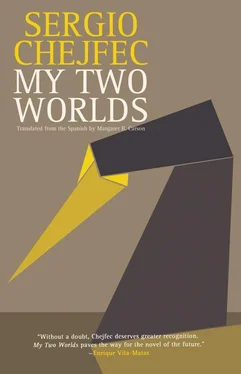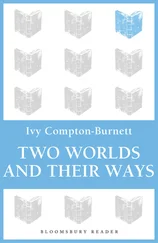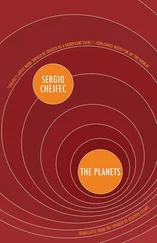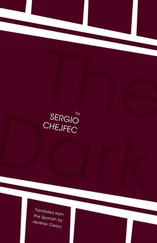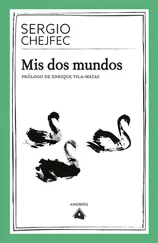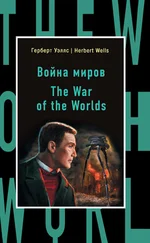A young waiter had left me the menu, only to take refuge immediately inside the café, probably wanting to benefit from the air conditioning. By now a brief age had gone by since his first appearance — short if one takes into consideration the span of a lifetime, long compared with the time most anyone would spend deciding what to order. For a moment, I thought I saw him keeping an eye on me from one of the windows. Not openly, like someone looking straight out, but diagonally, most of his body hidden behind the wall and his face peeking out a bit. I didn’t give much thought to him, because at the same time I discovered I was being observed from another angle: swan No. 15 was headed right toward where I was sitting.
It had its eyes riveted on me, as if it were trying to memorize what it would say when it arrived and wanted to get a head start. I recognized the swan because the father and daughter were aboard, their heads peeking out from behind the animal’s neck, one on either side. I recall that the girl was laughing as the father talked, and that her laughter became heartier just after her father said something and she looked at me. They were talking about and laughing at me, I supposed. It was the worst that could happen to me that day, being sensitized to the opinions of others in such a way. Perhaps I was mistaken, but it’s not easy to overlook certain signs, especially when someone wants to disguise them. The swan kept coming nearer, despite almost touching the shore and having the entire lake to itself, spread out behind it like a mirrored metal fan, tinged slightly with green because of the reflections of the plant life. The father and daughter seemed to be in control of the boat; but seeing them like that, sunken up to their necks inside the enormous body, made me think of them as involuntary yet unnecessary participants in the actual scene that was unfolding.
The scene was the most bucolic of paintings or photos: the afternoon light, the lacustrine landscape, and eloquent in the foreground, the swan looking directly up the line of sight. It was looking at me, as I said, and would keep doing so even if I changed tables or left the terrace. It would keep on looking at me if I stationed myself to one side of the lake, even if I spied on it from behind a tree, or if I actually placed myself behind it. Even to me, one of the protagonists of the critical moment, what was happening was impossible. I started thinking about causes. It obviously involved a dramatic exaggeration. It’s common to find eyes that look at us from paintings or photographs, as if they looked out once and for all, since they’ll never look away from us while we are looking at them. One of the friends I’ve been mentioning has to this day never forgotten an event from his childhood when an older lady lavished praise on a painting whose model gazed at all times at whoever was beholding her.
For me, to compose a picture with that scene of the swan was at that moment the most immediate way of discovering a meaning in it, and that no doubt came about because of my feeling designated, chosen, somehow lionized by chance or fate on being the birthday boy. It was even possible that what I’d picked up on somewhat apprehensively — the father’s derisive remarks to his daughter and her brief look — had in fact been a simple commentary, a piece of information, he told his daughter it was my birthday or that it was about to be, either way it was all the same, except that it would have been more inspiring if he’d said the latter, so that she had smiled shyly in my direction without knowing whether she should believe her father or not.
And I now recall Kentridge, the famous South African whose animated characters, especially one, named Felix — for whom he has a special affection, so much so that he seems to be an alter ego — rarely look out at the viewer. Nonetheless, they compensate for that characteristic, if indeed it must be compensated for and not entirely abandoned, by projecting visible gazes, I don’t know of any better name for them. A visible gaze would be the path traced by someone’s gaze, as if it were a beam of light or a luminous fluid. William Kentridge draws visible gazes by means of dotted lines, like those of the jets of water spurting in manifold directions in the fountain of the park I was in, which I described above. In this way, something physically impossible for painting or drawing to depict, as is the visual behavior of characters whose eyes we don’t see, is successfully achieved. We can observe Felix with his back to us, or from the side, while he contemplates a point in the landscape, a corner of the room, or the stars in the firmament, and we note how intermittent dashes leave his eyes to make up the dotted line, giving the impression of a column of ants or an action in progress, in this case almost the same thing.
The gaze thus drops its habitual burden of passivity. The physical argument, possibly erroneous, that supports this idea, I suppose, is that light is not unduly speedy, and as a result contemplation itself can become material, and hence easily seen. The dotted lines represent not only a connecting link, but the gaze in a process of continuous renewal, stretched toward the point under observation, as if each line, no matter how small, were a concise or great concentration of energy shot from the eye which will, on reaching its goal, vanish. Kentridge is famous for his animated films in graphite that tell stories for adults in the style of the pioneers of animation. Sometimes he seems to seek to represent the insatiable appetite of the capitalist system, devourer of souls, bodies, and nature; at other times he presents graphic reflections charged with melancholy about feelings and human actions. By and large, I’ve been moved after witnessing the physical metamorphoses of his characters, who are subject to earthly forces that literally dissolve them, extinguish them, or reconfigure them in another form in the next drawing.
Once the scene in which they are the protagonists is over, these people yield to their own bodily transformation. One sees the silhouettes in motion and beholds the supreme weariness that overtakes these characters by the time they’ve nearly given their all; a moment comes when they appear to stumble, they get muddled in the forest of dashes the screen has become, and one frame later they’ve been dissolved or transformed. Needless to say, I feel more and more often like a Kentridge character, especially Felix, that errant being, someone versatile set adrift in history and the course of the economy, but at the same time exaggeratedly indolent in the face of what surrounds him, things or individuals, to the point where he succumbs with no sense of shock to the consequences, at times definitive, of his actions.
On the terrace of the Café do Lago, I was taking this in as the afternoon shadows lengthened: my day’s walk, or perhaps my fast-approaching birthday as well, had united me still more with any of this artist’s characters, especially during an episode’s final vicissitudes, when they seem to get squashed, to dissolve among the elements or to vanish down the bathtub drain. I had the sensation of having been dragged to my table on the terrace, impelled by a private devotion, not overly fervent, but indeed pretty inertial, one that dwells on the minutiae of life and reality as a passport to daily existence. I imagined that as Felix I could fling myself into the lake and sink into its waters to drink them, through dozens of self-generated transfusion tubes; the next moment, the lake would empty, sublimating its waters toward the light of the stars and of something like the sun and the moon, a surrogate for the two, and I would remain in the middle of the empty pool, probably naked among the disabled swans, toppled and atilt on the earthen lakebed. The celestial body, moon or whatever it was, would shine, nearly full, and its alabaster reflection bathing the trees would be drawing’s self-evident homage to the gray scale of photography. .
Читать дальше
